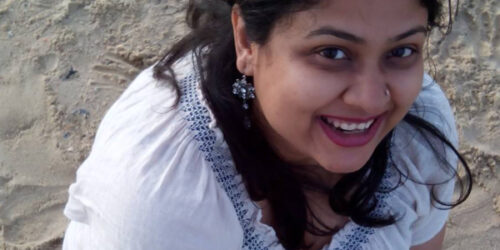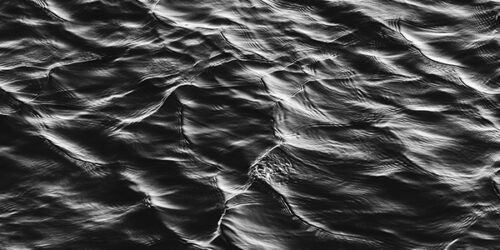
In June 2021, we welcomed Nuraliah Norasid as one of three writers and translators from Singapore in virtual residence in Norwich, with the support of the National Arts Council of Singapore. Find out more about our former residents here >>
During her residency, Nuraliah reflected on how you can walk through a city through the virtual lens, and look at a city as an outsider, wandering and wondering.
I love walks.
For the mental clarity that they provide and the space between here and there that is solitary and mine. Walking is a space, where I can leave a bit of the world that needed and demanded constant attention and focus behind. To listen to a podcast or an audiobook (at 1.5 times speed). To take in the sounds of my surroundings—bird calls, passing traffic, fragmented bits of conversation, and the shrill buzz of cicadas swelling and shrinking in the forested areas. To have on a playlist specially curated for walking, full of pop songs from the 2000s and 2010s, and the symphonic and rasping chords of my favourite songs from Nightwish as I think of and think up scenes from stories that I am writing.
‘What is a ‘walk’, in the places that we have never been?’
More than anything, walking is a time when my body feels most like itself. Strong, capable, and surprising. Shoulders relaxed. Neck loosened from its stiff hold. Breathing finds a rhythm that accommodates between labour and leisure. Every step feels sure to find ground.
So, how do I write about a walk for a place that I have never been to and, due to the travelling restrictions imposed by the pandemic, cannot be in? What is a ‘walk’, in the places that we have never been?
With the pandemic, various aspects of human life have been taken into virtual realms. Education, for example, procuring groceries, meals, even residencies such as this one. Travel guides have started using online platforms to deliver services and show the interested virtual traveller tourist spots and routes that they would not otherwise be able to see. One can turn to online sharing platforms—namely YouTube—for collections of ‘walking videos’: uninterrupted single-shot videos taken in real-time with the camera placed mid-view as if the videographer is wearing a body-cam, passing through streets, capturing common commuters, and going past shops and various other buildings and establishments. These videos are often without commentary, allowing for the buzz, crunch and clip of natural and everyday sounds to permeate through the speakers.
I found ‘Norwich Walk: City Centre [4K]‘ on the channel, 4K Explorer. It is about 30 minutes long, beginning at Timber Hill and ending at a spot along River Wensum. It is an immersive video, quiet in its sensibility even as the sounds come through in crisp quality. The first one I note is the breathy roar of the waste collection truck that rolls up as the viewer exits White Lion Street and turns into Gentleman’s Walk. The truck is white and pristine, which I find to be quite surprising for the purpose that it serves.
I wonder at the rows upon rows of small stalls with colourful roofs that line the left side of Gentleman’s Walk, perhaps stretching further inwards into an entire marketplace that I imagine would come alive with street food and music at night. The sounds of the videographer’s footsteps can be heard over the chorus of voices. A man breathes out vapour from a vape and the white smoke trails away from his face and far behind him as he walks, head slightly bent, a hand in his pocket. Perhaps it is rather fitting that just up at the corner of Exchange Street and Guildhall Hill, there is a ‘Cigs & Vapours / Cigs & Papers’ shop, as if they know, just know that vapours and papers always go with cigarettes.
‘I often wonder, as I always do even back here in Singapore, why streets are given the names they have and if they mark the traces of places and activities.’
The streets here have fantastic names: Guildhall Hill, Lower Goat Lane, Pottergate, and Lobster Lane… I often wonder, as I always do even back here in Singapore, why streets are given the names they have and if they mark the traces of places and activities that once were prevalent.
Along Bedford Street, I thought I heard the calls of seagulls, which is odd as, according to Google Maps, it does not look like the area is anywhere near the sea. A red Royal Mail van passes along the narrow, single-lane stone-paved way before disappearing around a building with a line of ‘Mister Grooming Room’, Subway and Greggs. Across the way, a building looms, the word ‘Books’ in huge letters cascading down its curved wall. Along London Street, I am so intrigued by ‘The Chicken Shop’ that I almost miss the dog stopping suddenly on its leash, catching its owner mid vigorous walk.
We follow for a while behind three young people before turning just before Whittards to go into Castle Street. Walking seems to be the most common way to commute as cars and other means of personal transportation seem to be few and far between. I think back to the pedestrian walkways in Singapore that come with the constant lookout for bicycles and e-scooters—an ever-going battle between always-angry, always-indignant people.
I see a Body Shop along Castle Street and outside a nearby Dr. Martens, a man tries to hand out flyers that no one seems to want to take. Along Davey Place, someone has spray-painted ‘Milk’ on a bit of grooved wall.
Some things, it seems, simply transcend borders: brands and nonsense graffiti.
The sounds of the street quiets into the strangely familiar mix of twitter and ‘troo-troo-troo-hoo-hoo’ bird calls of the Norwich Castle grounds. As the videographer’s footsteps crunches through the grounds, I find myself wondering: had I been a seasoned bird-watcher or an ornithologist, would these sounds have sounded different? Would I have heard a note that identified the calls to come from a different type of pigeon, another type of mynah-like species? Do common, urban birds, like brands and nonsense graffiti, transcend borders? Or does my sense of familiarity stem from not knowing any better?
The walk through the castle grounds ends far too quickly before viewers are taken through an archway marked by a pair of spray-painted teardrops, one sky blue and one white. A sign on the railing beyond reads, ‘Sponsor this place’.
As is usually the case with any walk, and anywhere, I find myself at points where I stop looking. Perhaps it is when someone says something really interesting in a podcast or something really exciting happens in an audiobook. Perhaps the song currently playing on Spotify is not quite checking the vibe of the moment. So, I will have to pause paying attention to tap through the selection until I find one that is suitable.
Sometime during this virtual walk, the robot vacuum we named ‘Wall-E’ starts on its scheduled cleaning routine. The cat, made nervous by the robot, has jumped out of her resting place and demands attention from the middle of the living room. I am reminded of appointments and schedules, lesson plans and emails…the load of laundry that needs to be done and the windows that are scheduled for cleaning, as the viewers are taken past the Wellington Statue to watch the tall spire of Norwich Cathedral emerge from behind the bowing foliage of several wispy trees growing in the surrounding open spaces. The sound of church bells reminds me of Sundays, morning and bright. I lived near a church once.
The scene grows progressively quieter as the viewer enters into Princes Street and then into Elm Hill. I feel the urge here to reach out and run my hand across the grey wall of aged stone brick, thick with what appears to be lichen. And across the ones made of red bricks with their signs of replacement and repair. It intrigues me to think of how many of the buildings that I have seen on this virtual walk have existed hundreds of years ago. Maybe even before that. And how many have now been refurbished and repurposed for modern lives, modern needs, somewhat modern economies. Logistics in historical buildings, just as they are in the old colonial shophouses here in Singapore, are often practical and creative endeavours. A TV antennae here, a Wi-fi box there, patched, attached and routed. Like changing the neckline of a decades-, even centuries-old dress.
Towards the end of the walking video, I spot a sign outside a tattoo shop that read, ‘Follow the herd’, which made me chuckle. As if by happy coincidence, a newspaper headline in turn read, ‘Your guide to today’s election’.
Around the corner, we are already at the quayside and the video stops by River Wensum to pause on the bridge, its double arches reflecting in the water as two buses drive across it.
If this had been a physical walk, I would likely have paused here, peered over the low wall and into the water, trying to see if I can see to its depths. I would have closed my eyes and tried to discern if the quayside smelled like home and if smells hold in the folds of them the textures and histories of their environments. However, until comes the time when scents and flavours can be remotely transmitted, we will have to be content with mere imagination.
Earlier, I’d asked the questions of how do I write about a walk, and what is a walk in a place I have never been? Viewing this virtual walk, three, four times now, it seems like the answer to that question lies in the act of wondering and wandering in one’s mind, making meaning as we perceive and pause (this time with a mouse-click) in the interstices of two spaces. The here and the there, that makes up the imaginary of our personal and social wholes.








